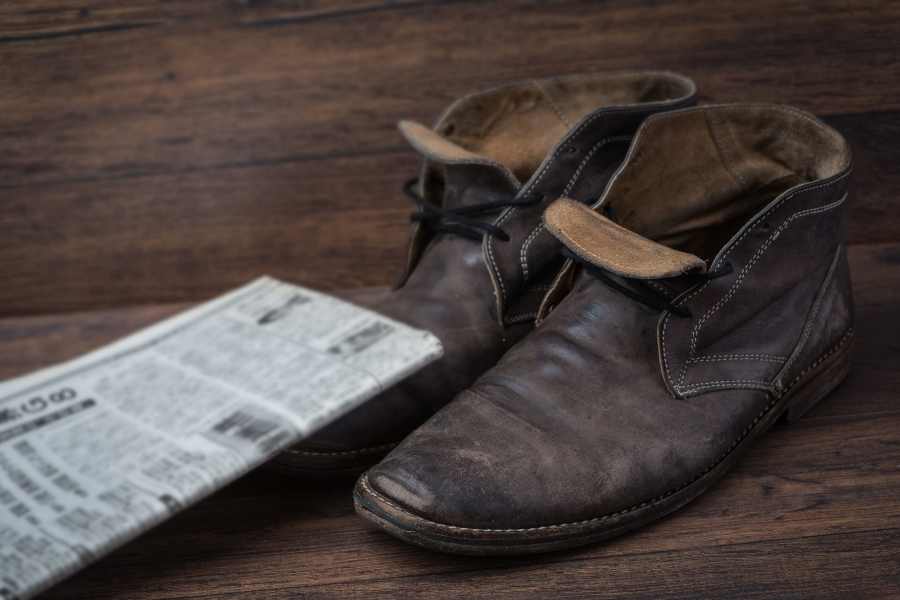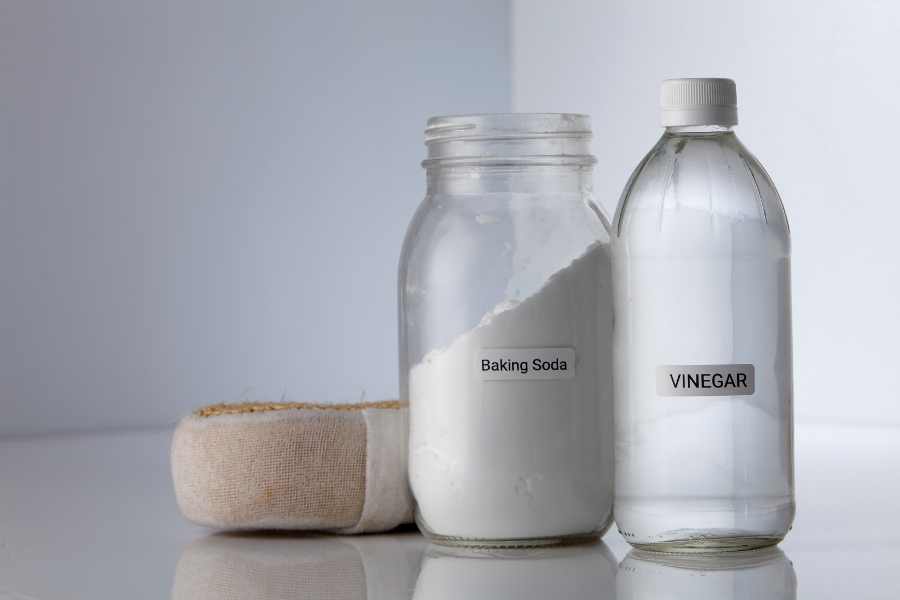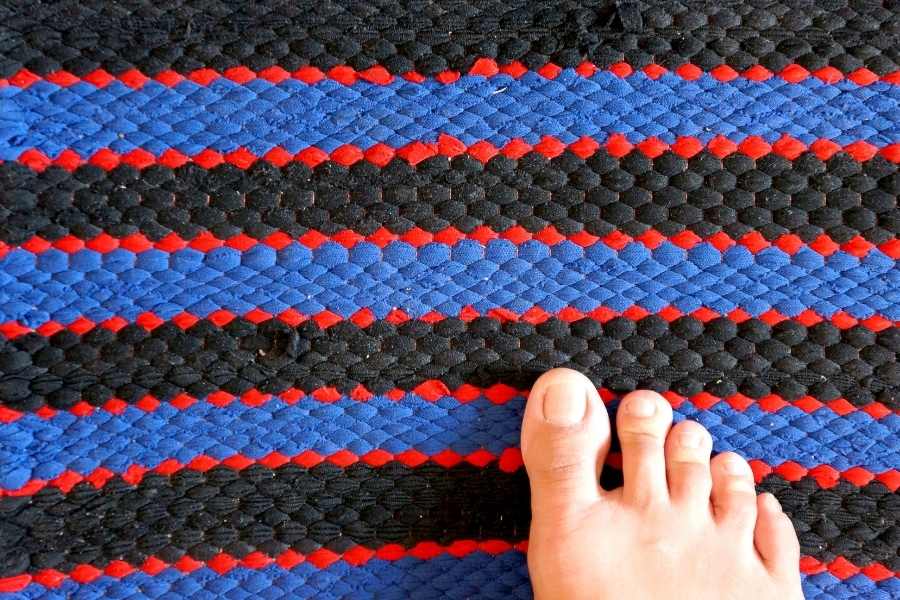Are your shoes making people’s noses wrinkle in disgust? Are the odors wafting off them so putrid that it’s driving the neighborhood dog crazy? Well, fear no more. Here are a few tricks on how to get foot fungus out of shoes and how you can get rid of bad shoe smells.

What Causes Foot Fungus?
Footwear is the perfect environment for fungus to thrive — it’s warm, moist, and dark. If your shoes are infected, you’ll probably start to see some fungus within two weeks.
Often a fungal infection takes hold in a pair of shoes — and in some cases, it grows into an unstoppable fungus like athlete’s foot (tinea pedis) or white patches (onychomycosis).
A persistent nail or foot infection might be fungal, so it’s essential to treat insoles and fungal infections simultaneously. This way, you can kill the fungus while controlling fungal growth.
How Long Does Fungus Live In Shoes
If you have a fungal infection, you’re likely aware that the infection doesn’t disappear quickly.
You can expect a nail fungal infection to take anywhere from two weeks to two months to heal, and it may take an additional year or more for the damaged nail surrounding the infection to grow out completely.
A skin fungal infection may take even longer to heal — in some cases, up to two years.
If you notice a fungal infection in your nails, it is best to treat the whole foot rather than just the affected nail. This will prevent other areas of your foot from getting infected, which could lead to more severe symptoms later on.
Here are clever hacks on how to get foot fungus out of shoes that you can try.
1. Dry Your Shoes with Newspaper After Every Use

I’m sure you’ve heard it before, but if you’ve worn your shoes on both Wednesdays and Thursdays, avoid putting them on your feet for the third time.
You may think that the moisture from one day will be completely gone by the next day — but unfortunately, that’s just not the case. This is especially true for leather, suede, or other porous materials that can’t soak moisture up as quickly as cloth or synthetics.
So switch up your shoes every day — it’s not just for looks. If you wear the same pair of shoes two days in a row, bacteria from your feet will build up inside of them. Not only will this make your shoes smell bad, but it can cause an infection on your foot.
Make sure to dry your shoes out. You can certainly invest in a pricey commercial dehumidifier, but simply crumpling up some newspaper and putting them inside can be a solution if you’re thinking about how to get foot fungus out of shoes the simpler way. This will help pull moisture out of your shoes.
If you’re in a pinch and your shoes are really wet, just wrap them in a newspaper. If you’re wondering whether can you put shoes in the dryer or not, just don’t! Avoid throwing your sneakers or shoes directly into the dryer. The heat from the dryer can damage leather or rubber soles.
By the way, did you know that stuffing your shoes with newspaper is also a neat trick on how to stop shoes from squeaking?
2. Stick a Cedar Shoe Tree Inside the Shoe

Here’s another trick on how to get athletes foot fungus out of shoes and it’s so simple!
Shoe trees are the unsung heroes of shoe care. They keep shoes smelling fresh, and they make them last longer by keeping them from stretching out with wear. They’re small, but if you wear dress shoes or leather-soled shoes, they’re very important.
Dress shoes, especially those made with leather, need to be stored in shoe trees when not in use. For those who already own leather dress shoes, you can buy a couple of pairs of inexpensive cedar shoe trees and stick them inside their shoes when you’re not wearing them.
The moisture that’s released from the shoe tree will help reduce foot fungus or odor issues. You can get yourself a STRATTON Men’s Adjustable Split Toe Cedar Shoe Tree if you don’t have a cedar shoe tree yet.
3. Wear Multiple Pairs of Shoes and Socks

It’s always a good idea to have more than one pair of shoes on hand, especially if you’re someone who wears them often. So here’s how to get foot fungus out of shoes.
Keep a few sets of quality footwear on hand to rotate throughout the workday. It’s especially important to do this in hot and humid locales, so your feet can stay cool and dry — which will help prevent odor-causing bacteria and fungal infection from forming.
If you wear the same pair of socks for a couple of days without taking them off, the fungus will start growing between your toes. This is because the dark color of most socks does not allow light to penetrate them, creating an ideal environment for fungus to grow in.
Darker-colored socks are harder to sanitize, as the stains on the sock don’t stand out as much. When you wear dark socks and allow heat and moisture to accumulate in your shoe, the fungus will have a field day.
Never wear the same pair of socks or shoes two days in a row — even if it feels like a pain to switch them out, you’re actually doing your feet a huge favor by prolonging their lifespan.
When feet are kept in tight-fitting footwear, they miss out on oxygen — which means that fungus can easily grow.
4. Use of UV Shoe Sanitizer

Do you want to keep your shoes clean and germ-free? Take a look at the best UV shoe sanitizers.
Put one inside your shoe for 25 minutes, and all the bacteria and microorganisms living in there will be killed off by the ultraviolet light.
Another option is to buy a UV sanitizer machine for your home. This device works like a miniature tanning bed, making it easy to kill germs and stop fungus from spreading.
5. Use Vinegar and Baking Soda
Vinegar and baking soda are two household ingredients that many of us have lying around the house — but what do they do? Well, vinegar can be used to help remove stains from a variety of surfaces, but vinegar is also an effective cleaner for fungus-infested shoes.

Spraying a surface with vinegar traditionally requires a dropper or spray bottle, but it can also be done using a mister bottle.
Baking soda is a great deodorizer, and the same trick will work for combatting shoe mold. Before application, make sure to test baking soda on a small area of the shoe first — if baking soda causes discoloration or damage, wash it away with water and use vinegar instead.
So why does this work?
Well, vinegar is an acid that decreases the pH levels of bacteria. As a result, the bacteria’s motor slows down and some even stop working entirely.
Baking soda seems to react similarly, though it doesn’t seem to slow down bacteria as much as vinegar does. The combination of both can keep bacteria away effectively.
6. Use Miconazole Antifungal Powder

Effective for athlete’s foot and groin, Miconazole Antifungal Powder is a topical treatment prescribed by medical professionals. It invades the cell membranes of the fungi, making it impossible for them to replicate.
One application is usually sufficient to eliminate an infection, but doctors often recommend using powder two times daily for more severe cases and infections on the groin.
7. Use Antifungal Soap For Feet

Still on the fence on how to get foot fungus out of shoes forever? Have you tried using an antifungal soap for feet?
There are many products for foot fungus, such as PediFix — the top-selling antifungal soap and best-selling foot spray. Tea tree oil, or melaleuca oil, has long been recognized as a strong fungus killer. Both compounds are also found in many dandruff shampoos.
If you’re looking for a way to treat your feet to a luxurious experience, then Solpri Shield Antifungal Soap is the perfect way to go. The soap uses the power of Lemongrass, tea tree oil, and eucalyptus oil to fight bacteria and wash away fungus — making it the perfect tool for contact sports.
8. Does Bleach Kill Fungal Infections?

How to disinfect shoes from fungus using bleach depends on the solution to be diluted. According to a University of Florida Health article, the dilution ratio is 1:10 Bleach: water or 1 cup of bleach for every gallon of water.
Because mixing bleach with materials other than water can change the proportions, be sure that your bleach is sufficiently diluted before applying it to your shoes.
A word of warning:
Pets can be harmed by a highly concentrated beach-to-water concoction. It may seem trivial to mix some bleach into the sand, water, and bucket, but all the ingredients are dangerous to animal life.
Pets are especially vulnerable because of their sensitive sense of smell — the bleach solution is actually harmful to them even if it does not cause any visible harm or discomfort.
Protective gear should also be used when handling the bleach solution. If the bleach were to touch your skin, rinse it off immediately with water. You can use the Clorox Clean-Up CloroxPro Disinfectant Cleaner.
So that’s how to get foot fungus out of shoes using bleach.
9. Will Using Lysol Kill Fungal Infections?

You’ve probably heard of an age-old practice of soaking your feet in Lysol. It’s how to get foot fungus out of shoes – some say. However, studies have shown that this can actually have the opposite effect.
Rather than reducing foot odor, Lysol can cause more harm than good — as it could burn your skin and cause other skin problems.
Even so, some people report using it successfully. After all, Lysol was once even recommended as a women’s hygiene product!
But when it comes to your home’s hygiene, the Environmental Working Group recommends choosing an alternative product to Lysol.
Its grade of F is particularly brutal—as well as an ingredient in the cleaner, Ethanolamine has been shown to cause respiratory problems and general organ and system effects.
Lastly, ammonium hydroxide is a dangerous chemical that should never be ingested. It can irritate the skin, eyes, and lungs as well as cause blindness or respiratory failure.
In addition to these frightening effects, it’s also highly corrosive towards many materials; it readily reacts with moisture in the air to form strong acids, and will even burn your skin if it touches it.
10. Preventative Measures

Clean Nail Clippers
To make sure your nail clippers are germ-free, you must clean them thoroughly. First, place them in a bowl of boiling water with a toothbrush.
When the water becomes steamy, remove the clippers and wipe off any dead skin or residue with a towel soaked in rubbing alcohol.
While the clippers cool off, blot them dry with a clean cloth. Now they’re ready to be used again — until their next deep clean.
Wear Flip-Flops
When you have to step in a pool at the gym or enter a locker room at the pool, there are certain steps to take to avoid fungal contamination.
Always wear flip-flops when these situations arise to protect your feet from germs and debris that may be left on the floor. Wash your feet with soap and dry them thoroughly, especially between your toes.
Conclusion
It’s always a good idea to keep your shoes dry and clean. Rotating through multiple pairs of shoes is an excellent way to prevent fungal infections from taking hold.
If you are forced to wear the same pair of shoe day in and day out, be sure to dry them out thoroughly before putting on a fresh pair and use antifungal soaps to sanitize inside and outside the shoe.
You can also use water heated to 140°F (60°C), soapy water, or antifungal soap, or use essential oils for their anti-fungal properties.
As much as it is heartwarming to see people come together and share, this adage doesn’t really hold true for illnesses or infections.
So next time you are in the market for a new pair of shoes that look like they’ve been through hell and back, do consider taking proper sanitary measures to avoid foot fungus or other communicable diseases.
So I really hope that you found this content on how to get foot fungus out of shoes to be both informative and helpful. If there’s anything else you’d like us to explain, or if you’d like us to cover any other topics, please let us know in the comments.
